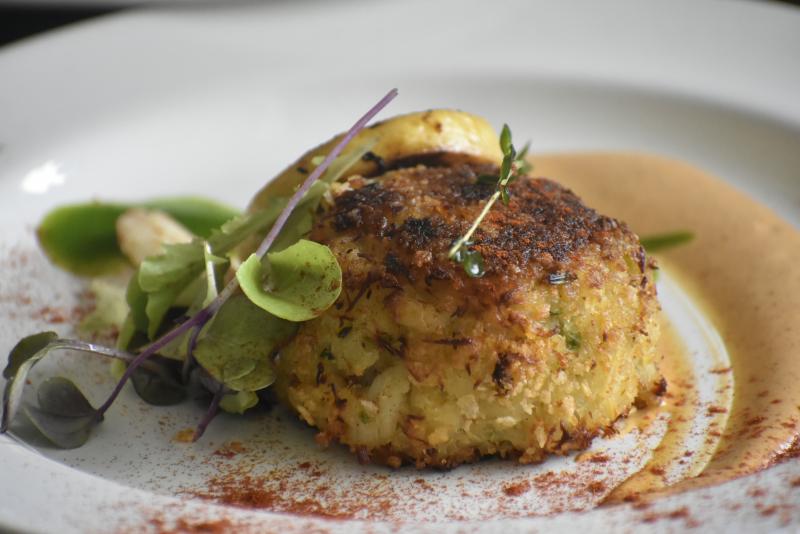California’s commercial crab fleet and wholesale seafood buyers remained locked in a stalemate Wednesday, two weeks after crabbers had the go-ahead to begin hauling up the first of the highly profitable Dungeness harvest.
The two sides are haggling over about 50 cents a pound — the difference between the $2.50 offered by seafood processors last month and the $3 commercial fishers say they need to be paid in order to do more than break even.
“We can’t afford to do these operations with the price they’re offering. We go backward,” said Ben Platt, president of the California Coast Crab Association. “That’s why everyone’s holding together, holding strong. We were starting at $3 a pound 10 years ago, and our costs have definitely gone up.”
The additional two bits that crabbers are seeking before they’ll be wiling to leave dockside makes an enormous difference when multiplied by thousands of pounds.
That’s partly what makes the wholesalers so reluctant to part with it. It represents a far larger dollar figure to them, crabbers said. That doesn’t make it any more feasible for them to accept a lower price, however.
“We could barely work for $2.75, but I don’t want to go for that, because you’re not going to come out ahead,” said veteran Bodega Bay crabber Tony Anello, part of a family long tied to the industry. “You’re not going to be able to keep your crew long, because you can’t sustain them. They’re going to go elsewhere.”
The ongoing strike has unified commercial crabbing boats up and down the California and Oregon coasts, the product of increased collaboration between the ports over recent years as the fleet has confronted repeated challenges to its industry — from toxic algae blooms to tightened restrictions intended to stave of whale entanglements.
But the price strike has now dragged on two weeks, sparking concerns that resolve could weaken among some skippers.
The official start of the commercial Dungeness crab season is Nov. 15, subject to clear tests for Domoic acid, a harmful neurotoxin naturally produced in certain algae that delayed the 2015-16 season by more than 4 months.
Additionally, new rules finalized this year call for monthly risk assessments to determine whether endangered whale species are feeding in the fishing grounds and, if so, whether the risk of entanglement is sufficient enough to delay the season, as occurred this season and last.
Last year, the fleet led the drive to postpone the season out of fear even a single entanglement could jeopardize the remainder of their season, forcing them to forego early landings. The fishery is one of the most lucrative in California, valued last year at $5.6 million in Bodega Bay, $3.1 million in Fort Bragg and $8.9 million in Eureka, according to state Fish and Wildlife data.
The state’s overall Dungeness crab catch, valued at $51.8 million, accounted for about a third of California’s overall $148 million in seafood landings.
Yet those who do the fishing have increasingly struggled in a profession that has always been subject to the vagaries of the weather, changing ocean conditions and nature’s swings in productivity.
This year, COVID added an additional layer, affecting markets and, potentially, the wholesale price, particularly with the delayed season eliminating the potential for sales of Thanksgiving crab, a North Coast tradition.
State Fish and Wildlife Director Chuck Bonham this year delayed the 2020-21 season twice because so many whales were late in starting their migration south, due to abundant forage along the Central and North Coast. When he set the opener for Dec. 23, he said he hoped that crabbers would have sufficient time to bring in a catch for Christmas, another big crab holiday, while providing assurance to the fleet that whales would have plenty of time to leave the area.
But many crabbers said there would be too little time to land a haul and get it to market in time for the holiday. More importantly, the $2.50 a pound price set by volume buyers was deemed unacceptable. The boats stayed at dock and have now missed the New Year’s market.
Chinese New Year, Feb. 12, is the last of the major holidays for which cracked crab is considered a staple, and the fleet hopes to be fishing by then.
Processors freeze much of the harvest, in addition to selling and exporting live crab, so they may feel less urgent about resolving negotiations, knowing that the crab are still in the water and will remain hungry for several weeks yet — until late February or March, when they begin to prepare for breeding.
Anello said he wished the season could have started in mid-November, before the latest surge in COVID cases further reduced restaurant service and ensured that winter crab feed circuit would be virtually canceled this year.
But he said he’s still planning to fish, and said he and his brother and son, all crabbers, were putting longer lines on their boats this week in case recent storms had driven the crabs to deeper waters.
Said Platt, a former Windsor resident who now lives in Crescent City, with his boat stacked with pots and ready to launch in Bodega Bay, “The crabs are still going to be there except for what was caught by the sport boats, which is a considerable amount in the Bay Area. I believe we we’ll settle on price within the next week ago and we’ll go crabbing.”
You can reach Staff Writer Mary Callahan at 707-521-5249 or mary.callahan@pressdemocrat.com. On Twitter @MaryCallahanB.
The Link LonkJanuary 07, 2021 at 09:13AM
https://ift.tt/398kHU6
Price strike drags on for California crab fleet holding out for better price - Santa Rosa Press Democrat
https://ift.tt/2MkGRbk
Crab

No comments:
Post a Comment